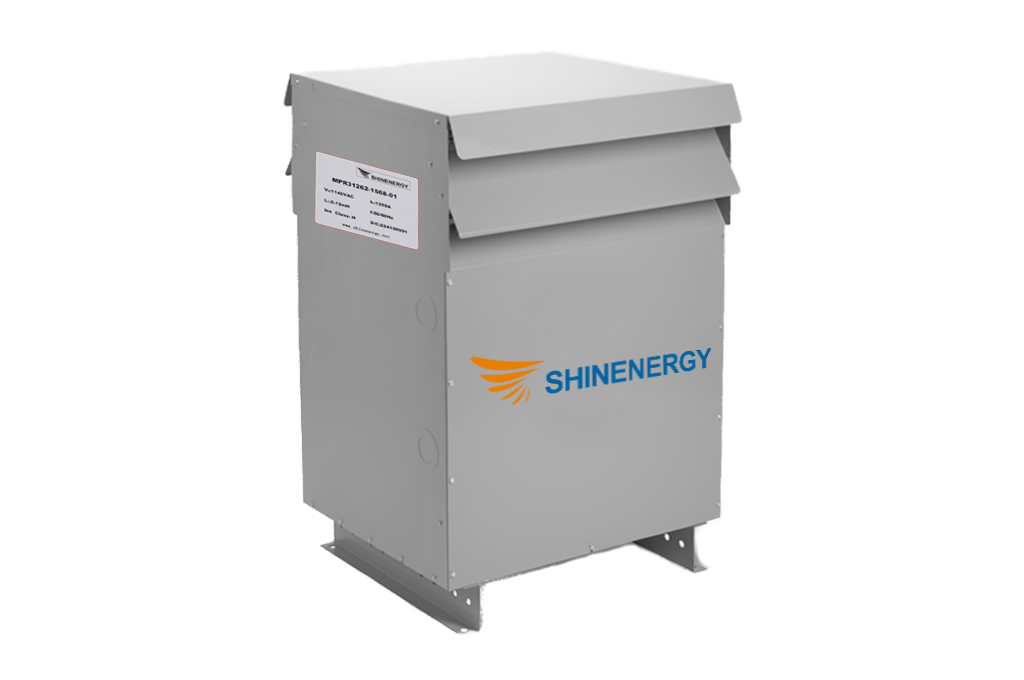Three Phase 240 to 480 Step Up Transformer
Custom Transformer Specifications:
- UL Certification standards
- 10KVA-3000KVA Rated power
- 50Hz/60 Hz Frequency
- 80°C -150°C Temperature Rise
- Class F/H/N/R Insulation Class
- Copper/Aluminum winding materials
- Δ-Y/Y-Y /Δ-Δ /Y-Δ/Δ-Z/Y-Z/ Wiring Configurations
- IP00/IP20/IP23/IP40/IP44/IP54
- Vacuum Pressure Impregnated Windings
- Energy Efficient

Shinenergy's Step Up Transformers: Powering Solar Efficiency
Shinenergy offers top-tier step up transformers crafted for photovoltaic (PV) applications. Our transformers effectively elevate voltage levels, significantly boosting the efficiency and dependability of solar energy systems. With extensive experience in the PV industry, Shinenergy provides customized solutions that maximize solar output and ensure stable power delivery, making us the go-to partner for your renewable energy projects.
Elevate Your Energy Storage with Shinenergy's Premium Step Up Transformers
In the energy storage sector, Shinenergy’s step up transformers are essential for optimizing battery system performance and safety. Designed to meet the specific challenges of energy storage, our transformers offer reliable voltage boosting and efficient power conversion. Trust Shinenergy to enhance your energy storage capabilities, ensuring long-term stability and superior operational efficiency.


Shinenergy's Reliable Step Up Transformers for Data Center Power Stability
For data centers, maintaining a secure and uninterrupted power supply is critical, and Shinenergy’s step up transformers are engineered to provide just that. Our transformers deliver consistent, regulated power to safeguard critical IT infrastructure from disruptions. With Shinenergy’s expertise, you can optimize your data center’s power management, reduce downtime, and enhance overall performance.
Robust Step Up Transformers for Wind and Hydrogen Applications by Shinenergy
Shinenergy provides durable step up transformers designed to meet the rigorous demands of wind energy and hydrogen production. Built to withstand harsh environmental conditions, our transformers facilitate efficient power conversion and support the growing needs of green energy projects. Choose Shinenergy for innovative and reliable solutions that enhance the efficiency of renewable energy operations.


Dependable Power Solutions for Healthcare with Shinenergy's Step Up Transformers
In healthcare, reliable power is non-negotiable, and Shinenergy’s step up transformers deliver essential voltage regulation for sensitive medical equipment. Our transformers are crafted to meet stringent medical standards, ensuring stable and consistent power in critical environments. With Shinenergy’s products, healthcare facilities can trust in the reliability of their power supply, supporting optimal patient care and operational excellence.
- Data Sheet
| Certification | UL |
| Phase | Three Phase |
| Rated capacity | UP TO 3000KVA Customized |
| Frequency | 50/60Hz |
| Work Efficiency | UP TO 99.05% |
| Protection Class | IP00/IP20/IP23/IP40/IP44/IP54 |
| Winding Material | Copper or Aluminum |
| Insulation level | Class F (155°C) Class H (180°C) Class N (200°C) Class R (220°C) |
| Designed lifetime | ≥30 years |
| Cooling Method | Air Cooling |
| Wiring Configuration | Δ-Y (Delta-Star)/Y-Y (Star-Star)/Δ-Δ (Delta-Delta)/Y-Δ (Star-Delta) /Δ-Z (Delta-Zigzag)/ Y-Z (Star-Zigzag) |
| Noise | ≤35 dB (1 meter) |
A Step Up Transformer increases the voltage from the primary winding to the secondary winding, making the output voltage higher than the input voltage. In contrast, a step down transformer decreases the voltage, making the output voltage lower than the input voltage. Both types of transformers are used to adjust voltage levels to match the requirements of different electrical systems.
A Step Up Transformer diagram typically shows the primary winding with fewer turns and the secondary winding with more turns. This design illustrates how the transformer increases the voltage from the primary side to the secondary side. The diagram also includes the magnetic core, which facilitates the transfer of electrical energy through electromagnetic induction.
A Step Up Transformer diagram typically shows the primary winding with fewer turns and the secondary winding with more turns. This design illustrates how the transformer increases the voltage from the primary side to the secondary side. The diagram also includes the magnetic core, which facilitates the transfer of electrical energy through electromagnetic induction.
A Step Up Transformer increases the voltage of an alternating current (AC) from a lower level on the primary side to a higher level on the secondary side. This is useful in situations where power needs to be transmitted over long distances, as higher voltages reduce energy loss during transmission.
A Step Up Transformer works on the principle of electromagnetic induction. When an alternating current flows through the primary winding, it creates a magnetic field in the core. This magnetic field induces a higher voltage in the secondary winding, which has more turns of wire compared to the primary winding, thereby stepping up the voltage.
The formula for a Step Up Transformer shows the relationship between the primary and secondary voltages and the number of turns in each winding:
Vs / Vp = Ns / Np
where:
- Vs is the secondary voltage,
- Vp is the primary voltage,
- Ns is the number of turns on the secondary winding, and
- Np is the number of turns on the primary winding.
In a Step Up Transformer, the secondary winding has more turns than the primary winding (Ns > Np), which results in a higher secondary voltage (Vs > Vp).
You can copy this text into Word without formatting issues.













